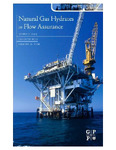Natural Gas Hydrates in Flow Assurance
| dc.contributor.author | Koh, Carolyn Ann | en_US |
| dc.contributor.author | Sum, Amadeu | en_US |
| dc.contributor.author | Sloan, E Dendy | en_US |
| dc.date.accessioned | 2018-03-09T07:56:55Z | |
| dc.date.available | 2018-03-09T07:56:55Z | |
| dc.date.issued | 2010 | en_US |
| dc.identifier.isbn | 978-1-85617-945-4 | en_US |
| dc.identifier.other | HPU5161152 | en_US |
| dc.identifier.uri | https://lib.hpu.edu.vn/handle/123456789/29601 | |
| dc.description.abstract | This is a condensed, updated version of earlier works to enable the flow assurance engineer to quickly answer seven questions: (1) How do hydrate plugs form? (2) How can hydrate plugs be prevented from forming? (3) How to deal safely with hydrate plugs? (4) How to remove a hydrate plug once it has formed? (5) How can kinetic inhibitors be certified? (6) What is the mechanism for naturally inhibited oils? (7) What are industrial hydrate case studies? Our focus is offshore systems, from the reservoir to the platform, because these lines are the most inaccessible and, thus, the most problematic. However, almost all of the content can be applied to onshore processes and export lines from platforms. | en_US |
| dc.format.extent | 213 p. | en_US |
| dc.format.mimetype | application/pdf | en_US |
| dc.language.iso | en | en_US |
| dc.publisher | Gulf Professional Publishing | en_US |
| dc.subject | Natural Gas Hydrates | en_US |
| dc.subject | Oil and Gas Technologies | en_US |
| dc.subject | Technique | en_US |
| dc.title | Natural Gas Hydrates in Flow Assurance | en_US |
| dc.type | Book | en_US |
| dc.size | 7,608 KB | en_US |
| dc.department | Technology | en_US |
Files in this item
This item appears in the following Collection(s)
-
Technology [3030]

